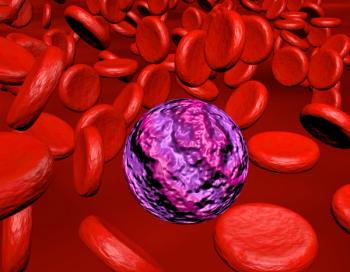
Rituximab boosts treatment regimen for chronic lymphocytic leukemia
Two of the largest trials to date on the treatment of chronic lymphocytic leukemia indicate that the combination treatment of fludarabine, cyclophosphamide, and rituximab (Rituxan) should become the new standard of care for both untreated and previously treated patients.
SAN FRANCISCO -- Two of the largest trials to date on the treatment of chronic lymphocytic leukemia indicate that the combination treatment of fludarabine, cyclophosphamide, and rituximab (Rituxan) should become the new standard of care for both untreated and previously treated patients.
In both phase III clinical trials, the FCR combination treatment was compared with treatment with fludarabine and cyclophosphamide alone, and in both cases showed significant benefits for progression-free survival and response rate.
In the REACH BO17072 trial, 552 patients with relapsed or refractory CLL were randomized to receive FCR or FC alone. The completed response rate in patients receiving the FCR treatment was superior to that achieved with FC alone (24.3% versus 13%). Progression-free survival was also better in those receiving FCR than in those on FC alone (30.6 months versus 20.6 months). Rituximab was given in six cycles with a dosage of 375 mg/m2 for cycle 1 and 500 mg/m2 for cycles 2 to 6 (abstract LBA1).
"With this regimen, patients can expect 10 months more of life and a superior complete response rate," said lead investigator Tadeusz Robak, MD, of the Medical University of Lodz in Poland.
Safety was also similar in both arms of the trial. There was a slight increase in adverse events in the FCR arm, including instances of neutropenia, infusion-related reactions, benign and malignant neoplasms, and hepatitis B. However, infections were manageable and similar in both arms, and safety was similar to that seen in previous studies, Dr. Robak said.
"This therapy is a major advance for patients with CLL," Dr. Robak said. "The study shows definitively that the addition of rituximab is better for patients with previously treated CLL. I would anticipate that this data could be practice-changing."
In the CCL8 trial of 817 previously untreated patients (median age 61 years), the median progression-free survival was 42.8 months for those on FCR compared to 32.3 months for patients on FC alone. All patients were defined as physically fit, as determined by a cumulative illness rating scale score of up to 6. Rituximab was given in six cycles with a dosage of 375 mg/m2 for cycle 1 and 500 mg/m2 for cycles 2 to 6 (abstract 325).
The overall response rate was higher in the FCR arm (95%) when compared with the FC arm (88%). Patients on FCR also showed an improved complete response rate over those on FC alone (52% versus 27%). The addition of rituximab to therapy did not affect safety. The incidence of severe infections was similar in patients who received FCR as in those who received FC alone (18.8% versus 14.8%).
"We were surprised and pleased that, as well as improving outcomes, FCR proved to be a safe therapy," said Michael Hallek, MD, of the University of Cologne in Germany.
Although there was a greater incidence of neutropenia in the FCR arm, the rate of serious infections was not significantly different, he said.
The study has the potential to change treatment standards for untreated CLL, Dr. Hallek noted.
"Already in Germany we are recommending FCR as a standard treatment. It will eventually become the standard first-line treatment for this cancer," he said.
Newsletter
Stay up to date on recent advances in the multidisciplinary approach to cancer.

















































































